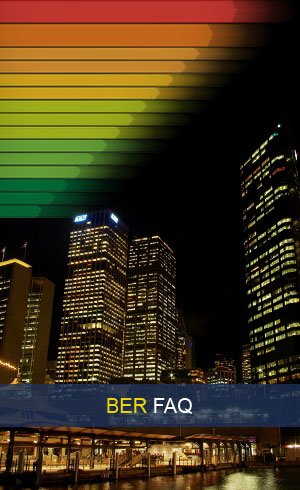
Loading



BER Frequently Asked Questions FAQ’s
Why BER certs. are required: A Building Energy Rating (BER) and advisory report is to be supplied by the owner to a prospective buyer or tenant when a building is constructed, sold or rented. The BER is intended to give prospective buyers and tenant’s information about the energy performance of buildings.
Advisory report: The BER must be accompanied by an "Advisory Report" setting out recommendations for cost-effective improvements to the energy performance of the building. However there is no legal obligation on vendors or prospective purchasers to carry out the recommended improvements.
At what point is a BER cert. required? A person who commissions the construction of a building shall, before such building is occupied for the first time, secure a BER certificate and advisory report.
A person who offers for sale or letting (whether in writing or otherwise)— a building that is in existence on or before 1 January 2009 and any agent acting on behalf of such person in connection with such offering, shall produce a printed copy of the BER certificate and advisory report in relation to the building to any person expressing an interest in purchasing or taking a letting of the building and on demand to the building control authority in whose functional area the building is situated.
Are any buildings exempt from BER certs? Some buildings are exempt from having BER certs. as follows:
» National monuments,
» Protected structures,
» A building used as a place of worship or for religious activities,
» A temporary building,
» An industrial building not intended for human occupancy over extended periods and where the installed heating capacity does not exceed 10 W/m2;
» A non-residential agricultural building where the installed heating capacity does not exceed 10 W/m2; and
» A stand alone building with a total useful floor area of less than 50m2.
What exactly is on the cert. and what does it mean? The BER cert. looks broadly similar to the energy labels now provided with vehicles and many household appliances. Its purpose is to indicate how energy efficient a building is. The certificate will provide an energy rating of the building from A to G, where A is very efficient and G is the least efficient. The better the rating, the more energy-efficient the building is, and the lower the fuel bills are likely to be. The energy performance of the building is accompanied by a CO2 emissions indicator.
Who can carry out assessments? Assessments can only be carried out by SEI registered non domestic BER assessors who must act in an independent manner. This independence means that they or connected persons can have no interest in the outcome of the rating other than the fee that they receive for the work. This means in practice that estate agents cannot directly employ energy assessors who will certify buildings that the agent is involved in letting or selling and further the code of conduct from SEI also prohibits an estate agent from engaging a connected (business partner or close family relation) company to carry out the assessment. Another example of the obligation to act in an independent manner is that an assessor employed by a company with a connection to a building owner is prohibited from carrying out an assessment on that building. Hence estate agents must use independent companies to carry out assessments, MLP Facility Managers is one such company.
What is involved in producing a BER cert.?The assessment process calculates the energy consumption and CO2 emissions associated with a standardised use of a building and compares to the actual building and involves the following:
» Surveying building to gain information on activity and thermal zoning, materials of construction & heating & cooling systems. Availability of accurate floor plans and technical data reduces the amount of work involved and hence price of producing a BER cert.
» Designing a zoning scheme for the building in accordance with guidelines.
» Creating a building model using zoning scheme and approved Software.
» Researching building thermal capacities, u values and materials and integration into the model.
» Producing reports and certificates for energy rating, compliance to part L of the building regulations and advisory reports.
» Advising on ways to improve building energy efficiency and carbon emissions to improve rating and clarify payback on recommendations.
» Both the BER cert. and the advisory report are lodged for approval by SEI prior to publication on the national register and can only be issued to clients once approved.
How long is a BER cert. valid for? A BER cert. is valid for 10 years from date of issue, however it is rendered invalid if there is any material change in the building which could affect its energy performance, including-
» Any significant deterioration in the fabric of the building;
or
» Any extension of the building;
or
» Any change in the heating system for the building or in the type of fuel used by that system.
How much does a BER cert. cost? The cost of surveying & producing a cert varies according to a number of factors including, size, age of building, quantity of fenestration, extent to which building is divided into activity areas e.g. cellular offices versus open plan, canteens, store rooms etc. and most importantly availability of accurate documentation specifically floor plans. The cost of lodging a cert with SEI is currently €50 + VAT.
